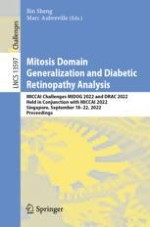This book constitutes two challenges that were held in conjunction with the 25th International Conference on Medical Image Computing and Computer-Assisted Intervention, MICCAI 2022, which took place in Singapore during September 18-22, 2022.
The peer-reviewed 20 long and 5 short papers included in this volume stem from the following three biomedical image analysis challenges:
Mitosis Domain Generalization Challenge (MIDOG 2022), Diabetic Retinopathy Analysis Challenge (CRAC 2022)
The challenges share the need for developing and fairly evaluating algorithms that increase accuracy, reproducibility and efficiency of automated image analysis in clinically relevant applications.
